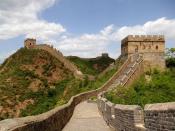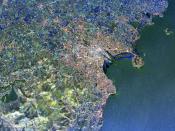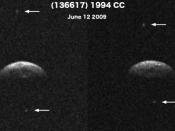Technology does more than bring the field to life by recreating visual images of the past. Technology helps people visualise as well as convey arguments and ideas linked to what might have existed in the past. For example, Imaging Radar allows scientists to do aerial mapping of areas that were difficult to map previously, due to heavy forests or dense cloud coverage. Imaging radar uses multispectral radar frequencies sent from something such as a space shuttle or satellite. The radar illuminates Earth with microwaves allowing detailed observations at any time, regardless of weather or sunlight conditions. Imaging radar can also penetrate thin layers of sand, allowing things to be viewed that can not normally be seen with the naked eye. The ability to see through thin layers of sand, up to 2 meters, has been important to archaeology. It allows archaeologists to know the location of sites in desert areas before they start excavating.
The Lost City of Ubar is an example of a site that was found through imaging radar. Using imaging radar, an additional section of the Great Wall of China was also found buried under dirt and sand. As Imaging radar can also penetrate through heavy vegetation, such as tropical forests, it is also helpful in finding sites such as Angkor in Cambodia. The worldwide web offers a technological method of finding information from all over the world within minutes while allowing the public to gain access to an extensive variety of data in a more dynamic visual and auditory context as an alternative to the traditional text. The growing number of web sites dedicated to archaeology are testament to the value of the worldwide web as a tool to access and release data, and, like most sciences, examine these data reports. Archaeology, being more visually oriented,


